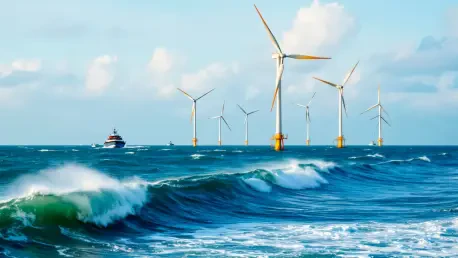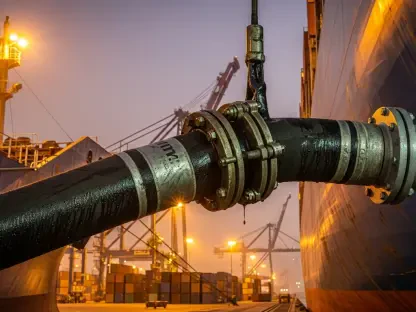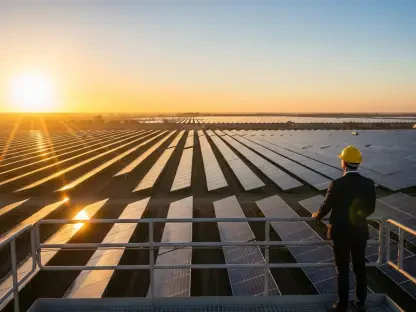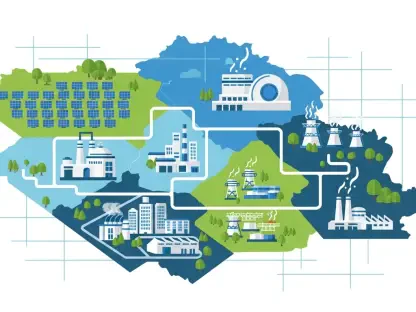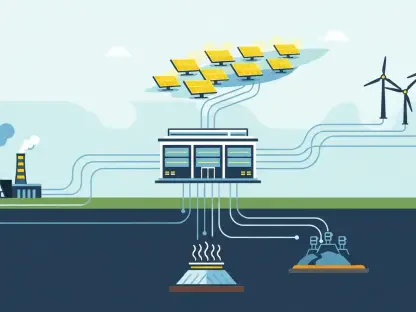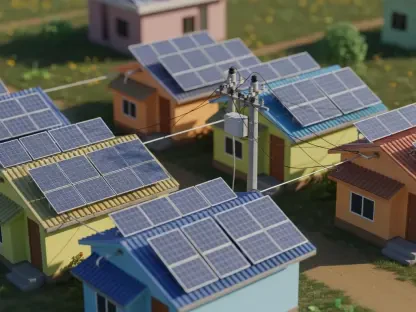I’m thrilled to sit down with Christopher Hailstone, a seasoned expert in energy management and renewable energy with a deep understanding of electricity delivery and grid reliability. With years of experience in the utilities sector, Christopher offers invaluable insights into the evolving landscape of U.S. energy policy, particularly in the realm of offshore wind projects. Today, we’ll dive into the recent halt of Orsted’s Revolution Wind project near Rhode Island, exploring the implications for the company, the broader offshore wind industry, and the trajectory of renewable energy under the current administration. Our conversation touches on national security concerns, financial challenges, industry-wide impacts, and the political climate shaping these developments.
Can you walk us through what’s happening with Orsted’s Revolution Wind project near Rhode Island and why it’s been stopped?
Certainly, Silvia. The Trump administration recently ordered Orsted, a major Danish offshore wind developer, to halt construction on their Revolution Wind project, which is located off the coast of Rhode Island. This project was already 80% complete, with all foundations installed and nearly 70% of the turbines in place. The stop-work order came from the Bureau of Ocean Energy Management (BOEM), citing national security concerns and potential interference with other uses of the ocean. This halt is a significant setback, as the project was on track to be finished next year and was expected to power 350,000 homes in Rhode Island and Connecticut. Now, with construction frozen, the timeline is completely up in the air, and there’s no clear path forward for completion.
What specific concerns did BOEM raise to justify this stop-work order?
BOEM’s reasoning, as outlined in their order, revolves around two main points: protecting national security and preventing interference with what they call ‘reasonable uses’ of the exclusive economic zone and surrounding seas. While the national security concerns remain vague—there’s no detailed explanation of what specific risks they’re worried about—the interference issue likely refers to conflicts with shipping lanes, fishing activities, or military operations in the area. This decision also fits into a larger pattern under the current administration, which initiated a broad review of offshore wind projects shortly after taking office. It’s clear they’re prioritizing caution over renewable energy development, at least for now.
How is Orsted handling this unexpected halt to their project?
Orsted has been pretty proactive in responding to this challenge. They’ve stated that they’re evaluating all possible options to resolve the issue as quickly as they can. That includes exploring legal action, though they haven’t specified what form that might take—potentially a lawsuit or appeal against BOEM’s decision. They’re also assessing the financial fallout from this delay, which is significant given the project’s advanced stage. Orsted has promised to update the market on how this impacts their broader financial strategy, but for now, they’re keeping their cards close to the chest while they figure out the next steps.
Speaking of finances, how does this stop-work order affect Orsted’s bottom line and future plans?
Financially, this is a tough blow for Orsted. With Revolution Wind 80% complete, they were close to generating revenue from this $1.5 billion project, but now that’s on hold indefinitely. They’re also in the middle of a massive $9.4 billion emergency rights issue to shore up their finances, partly to fund other projects like Sunrise Wind off New York. This halt could shake investor confidence and complicate that fundraising effort. Additionally, it raises questions about their other U.S. projects—if delays and policy roadblocks become the norm, Orsted might have to rethink their expansion strategy in the American market, which is already facing headwinds from rising costs and regulatory uncertainty.
What does a decision like this mean for the broader offshore wind industry in the United States?
This stop-work order sends ripples through the entire offshore wind sector. For one, it puts jobs and investments at risk—projects like Revolution Wind create thousands of jobs and attract significant capital, both of which are now in limbo. The National Ocean Energy Industries Association highlighted that halting a near-finished project undermines confidence in the industry as a whole. Other companies are watching closely, especially since this isn’t an isolated incident; we’ve seen similar administrative pushback on other renewable projects. It creates a chilling effect, where developers might hesitate to commit to new ventures in the U.S. due to the unpredictability of policy support.
How would you describe the current administration’s approach to offshore wind energy, and how does it influence decisions like this one?
The Trump administration has been openly skeptical of offshore wind energy from day one. President Trump has called wind power ‘ugly, unreliable, and expensive,’ and his actions reflect that stance. On his first day in office, he suspended new offshore wind leasing for an environmental and economic review, signaling a broader intent to slow down or reevaluate renewable energy projects. We’ve seen other halts this year, like the temporary stop on an Equinor project, though that was later reversed. This approach prioritizes other interests—national security, traditional energy sectors, or economic concerns—over the push for clean energy, which directly impacts decisions like the one affecting Revolution Wind.
Looking ahead, what’s your forecast for the future of offshore wind in the U.S. under these conditions?
I think the future of offshore wind in the U.S. is at a critical crossroads. On one hand, the potential is enormous—coastal states have ambitious clean energy goals, and the technology is proven to deliver large-scale, sustainable power. But on the other hand, the current political climate and regulatory uncertainty could stifle growth for the next few years. If the administration continues to prioritize other concerns over renewables, we might see more delays or even cancellations, which would push back climate targets and discourage investment. However, if states and private companies can find ways to navigate these challenges—perhaps through stronger legal frameworks or partnerships—there’s still hope for momentum. It’s going to depend heavily on the outcome of policy battles and the resilience of industry players like Orsted.
